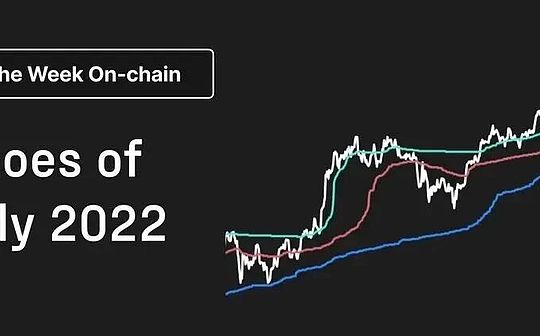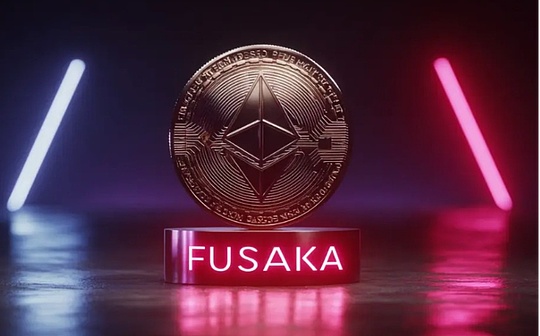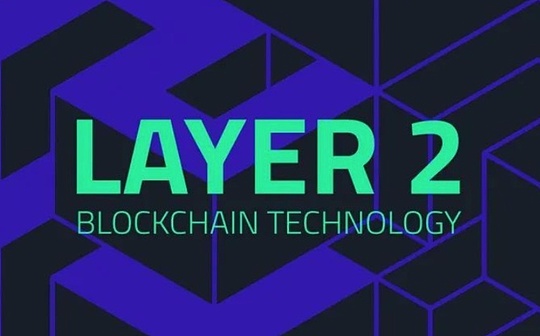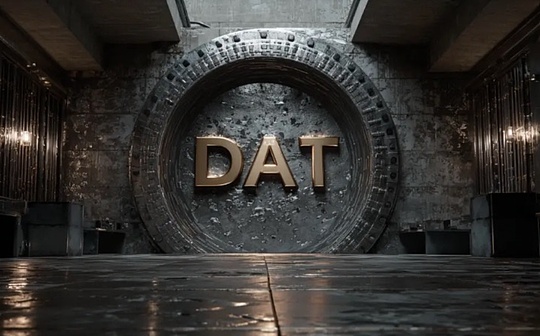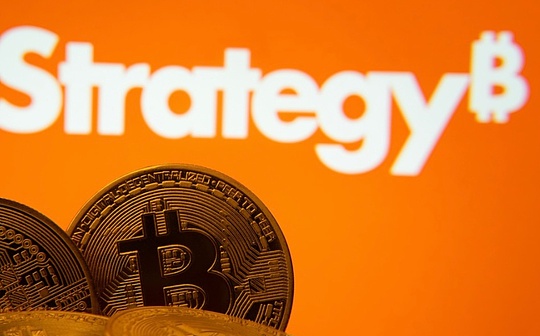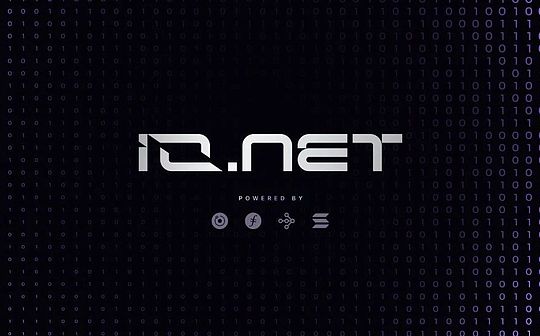
IO.NET is a decentralized AI computing platform developed by IO Research, which has reached US $ 1 billion in FDV valuation in its latest round of financing.
IO.NET announced in March this year to complete a round A financing of $ 30 million under the lead of Hack VC, including Multicoin Capital, 6th Man Ventures, Solana Ventures, APTOS Labs, Delphi Digital, The SANDBO X and TheSandbox’s Sebastian Borget and other participation.
IO.NET focuses on aggregating GPU resources for AI and machine learning companies, and is committed to providing services at a lower cost and faster delivery time.Since its launch in November last year, IO.NET has grown to more than 25,000 GPUs, and has handled more than 40,000 calculation hours for artificial intelligence and machine learning companies.
The vision of IO.NET is to build an ecosystem between a global de -central AI computing network for AI and machine learning teams/enterprises and powerful GPU resources around the world.
In this ecosystem, AI computing resources become commercialized, and the supply and demand parties will no longer bother because of no resources.In the future, IO.NET will also provide access to IO model stores and advanced reasoning functions, such as no server reasoning, cloud game, and pixel flow.
Business background
Before introducing the business logic of IO.NET, we must first understand the track of decentralized computing power from two dimensions: one is the development process of AI computing, and the other latitude is to understand the same use of decentralized computing power in the past.Case.
The development process of AI computing
We can depict the development trajectory of this AI computing from several critical time points:
1. Early stage of machine learning (1980s -early 2000s)
During this period, machine learning methods are mainly concentrated in relatively simple models, such as decision trees, support vector machines (SVM).The computing requirements of these models are relatively low and can be operated on personal computers or small servers at that time.The data set is relatively small, and feature engineering and model selection are key tasks.
Time point: from the 1980s to the early 2000
Computing power requirements: Relatively low, personal computers or small servers can meet the needs.
Calculate hardware: CPU dominates computing resources.
Second, the rise of deep learning (2006-recent)
In 2006, the concept of deep learning was introduced again, and this period was marked by the research of Hinton et al.Subsequently, the successful application of deep neural networks, especially the convolutional neural network (CNN) and circulating neural network (RNN) marked the breakthrough in this field.The demand for computing resources at this stage has increased significantly, especially when processing big data sets such as images and voice.
Time point:
The IMAGNET competition (2012): The victory of Alexnet in this competition is an iconic event in deep learning history. It first shows the huge potential of deep learning in the field of image recognition.
AlphaGo (2016): The AlphaGo of Google DeepMind defeated the world Go champion Li Shishi. This should be the most high time of AI so far.The ability of the problem.
Computing power requirements: Significantly increased, more powerful computing resources are required to train complex deep neural networks.
Calculation hardware: GPUs begin to become key hardware for deep learning training, because they are far better than CPUs in parallel processing.
Third, the era of large -scale language models (2018 to the present)
With the emergence of BERT (2018) and GPT technology (after 2018), the big models began to dominate the AI track.These models usually have billions to trillion -dollar parameters, and the demand for computing resources has reached unprecedented levels.Training these models requires a large number of GPUs or more professional TPUs, and a large amount of electricity and cooling facilities support.
Time point: 2018 to the present.
Computing power requirements: Extremely high, a large amount of GPU or TPU is required to form a scale and supplemented by corresponding infrastructure support.
Calculating hardware: In addition to GPU and TPU, there are also special hardware optimized for large machine learning models, such as Google’s TPU, NVIDIA’s A and H series, etc.
From the perspective of the exponential growth of AI in the past 30 years, the demand for computing power in early machine learning has lower demand for computing power. In the era of deep learning, the demand for computing power has increased.EssenceWe have witnessed the significant improvement of calculating hardware from quantity to performance.
This growth is not only reflected in the expansion of the scale of traditional data centers and the improvement of hardware performance such as GPU, but also reflects the high investment threshold and generous return expectations, which is enough to make the fight between Internet giants.
The traditional centralized GPU computing power center requires expensive hardware procurement (such as GPU itself), the construction or lease cost of the data center, the cooling system, and the cost of maintenance personnel.
In contrast, IO.NET’s decentralized calculation platform project has obvious advantages in terms of building costs, which can significantly reduce initial investment and operating costs. It can create its own AI model for the small and micro team.
The use of the existing distributed resources of the decentralized GPU project does not need to be concentrated in the construction of hardware and infrastructure.Individuals and enterprises can contribute to the network of idle GPU resources, reducing the needs of centralized procurement and deployment of high -performance computing resources.
Secondly, in terms of operating costs, the traditional GPU cluster needs to be continuously maintained, electricity and cooling costs.The decentralized GPU project can share these costs to each node by using distributed resources, thereby reducing the operating burden of a single organization.
According to IO.NET documents, IO.NET has greatly reduced operating costs through aggregation from independent data centers, cryptocurrency miners, and other hardware networks such as Filecoin and RENDER.Coupled with the web3’s economic incentive strategy, IO.NET has great advantages in pricing.
>
Decentralization calculation
Looking back at history, there were indeed some decentralized computing projects in the past achieved significant success. Without economic incentives, it still attracted a large number of participants and produced important results.for example:
Folding@Home: This is a project initiated by Stanford University. It aims to simulate the protein folding process through distributed calculations to help scientists understand the mechanism of the disease, especially diseases related to improper protein, such as Alzheimer’s disease, Huntington Diseaseswait.During the COVID-19 epidemic, the Folding@HOME project gathered a large amount of computing resources to help study the new coronal virus.
Boinc (Berkeley Open Infrastic for Network Computing) **: This is an open source software platform that supports various types of volunteers and grid computing items, including astronomy, medicine, climate science and many other fields.Users can contribute idle computing resources and participate in various scientific research projects.
These projects not only prove the feasibility of decentralized calculation, but also show the huge development potential of decentralized calculations.
By mobilizing unused computing resources from all walks of life, it can significantly enhance computing power. If you innovate the economic model of Web3 innovatively, you can also achieve greater cost benefits in economy.Web3 experience shows that a reasonable incentive mechanism is attracted and maintained by users.
By introducing the incentive model, it can build a win -win community environment, which can further promote the expansion of the business scale and promote technological progress on the cycle.
Therefore, IO.NET can attract widespread participants through the introduction of incentive mechanisms, jointly contribute computing, and form a strong decentralized computing network.
Web3’s economic model and decentralized computing power potential provides strong growth momentum for IO.NET, and achieve efficient resource utilization and cost optimization.This not only promotes technological innovation, but also provides value for participants, which can make IO.NET stand out in the competition in the AI field, with huge development potential and market space.
IO.NET technology
Cluster
The GPU cluster refers to complex calculations that connect multiple GPUs through the network to form a collaborative computing cluster. This method greatly improves the efficiency and ability to handle complex AI tasks.
Cluster computing not only speeds up the training speed of the AI model, but also enhances the ability to process large -scale data sets, making AI applications more flexible and scalable.
In the process of traditional Internet training AI models, large -scale GPU clusters are needed.However, when we consider turning this cluster computing mode to decentralization, a series of technical challenges emerged.
Compared with the AI computing cluster of the traditional Internet company and decentralized GPU cluster computing, more problems will be faced, such as: nodes may spread throughout different geographical locations, which brings network delay and bandwidth limitations, which may affect itThe synchronization speed between nodes affects the overall calculation efficiency.
In addition, how to maintain the consistency and real -time synchronization of data between each node is also essential for ensuring the accuracy of the calculation results.Therefore, this requires the decentralized computing platform to develop efficient data management and synchronization mechanisms.
And how to manage and scatter decentralized computing resources to ensure that computing tasks can be effectively completed, it is also a problem that decentralized cluster calculation needs to be solved.
IO.NET has built a decentralized cluster computing platform by integrating Ray and Kubernetes.
As a distributed computing framework, Ray is directly responsible for performing computing tasks on multiple nodes. It optimizes the training process of data processing and machine learning models to ensure that the task runs efficiently on each node.
Kubernetes plays a key management role in this process. It automaticallyizes the deployment and management of container applications, ensuring that computing resources are dynamically allocated and adjusted according to demand.
In this system, the combination of Ray and Kubernetes realizes a dynamic and elastic computing environment.RAY ensures that the computing task can be executed efficiently at appropriate nodes, while Kubernetes guarantees the stability and scalability of the entire system, and automatically handle the increase or removal of the node.
This synergy enables IO.NET to provide coherent and reliable computing services in decentralized environments. Whether in data processing or model training, it can meet the diverse needs of users.
In this way, IO.NET not only optimizes the use of resources, reduces the operating cost, but also improves the flexibility of the system and the control of users.Users can easily deploy and manage computing tasks of various scale without worrying about the specific allocation and management details of underlying resources.
This decentralized computing mode, with the powerful features of Ray and Kubernetes, ensure the efficiency and reliability of the IO.NET platform when processing complex and large -scale computing tasks.
privacy
Because the decentralized cluster task deployment logic is much more complicated than the cluster logic in the machine room, and in view of the transmission of data and computing tasks in the network, add potential security risks.Consider safety and privacy protection.
IO.NET improves the security and privacy of the network by using the decentralization characteristics of the mesh private network channel.In such a network, because there is no central concentration point or gateway, the risk of single -point faults facing the network is significantly reduced. Even if some nodes encounter problems, the entire network can still be operated.
Data is transmitted along multiple paths in the network network. This design increases the difficulty of tracking the data source or destination, thereby strengthening the anonymity of users.
In addition, by adopting technologies such as data packet filling and time confusion (Traffic Obfuscation), the network VPN network can further blur the data flow, making it difficult for eavesdroppers to analyze traffic mode or identify specific users or data streams.
IO.NET’s privacy mechanism can effectively solve privacy problems because they jointly build a complex and variable data transmission environment, making it difficult for external observer to capture useful information.
At the same time, the decentralized structure avoids the risk of all data flowing through a single point. This design not only improves the robustness of the system, but also reduces the possibility of being attacked.At the same time, the multi -path transmission and the confusion strategy of traffic jointly provided a layer of additional protection for the user’s data transmission, which enhanced the overall privacy of the IO.NET network.
Economic model
IO is the native crypto currency and protocol for the IO.NET network, which can meet the needs of the two main entities in the ecosystem: AI startups and developers, as well as computing power providers.
For AI startups and developers, IO simplifies the payment process of cluster deployment, which is more convenient; they can also use iOSD CREDITs linked to the US dollar to pay the trading fee to calculate the task on the network.Each model deployed on IO.NET needs to be inferred through tiny IO currency transactions.
For suppliers, especially the providers of GPU resources, the IO coins ensure that their resources have been fairly returned.Regardless of the direct return of the GPU when the GPU is rented or the passive income from the network model in inferring in the free time, the IO coin provides a reward for each contribution of the GPU.
In the IO.NET ecosystem, IO currency is not only a medium for payment and incentives, but also the key to governance.It makes each link of model development, training, deployment and application development more transparent and efficient, and ensure the mutual benefit and win -win situation between participants.
In this way, IO coins not only inspired the participation and contribution of the ecosystem, but also provided a comprehensive support platform for AI startups and engineers, promoting the development and application of AI technology.
IO.NET has worked hard on the incentive model to ensure that the entire ecosystem can be circulated forward.The goal of IO.NET is to establish a direct hour rate expressed in the US dollar for each GPU card.This requires a clear, fair and decentralized GPU/CPU resource pricing mechanism.
As a bilateral market, the core key to motivating models is to solve the two major challenges: on the one hand, the high cost of reducing the computing power of renting GPU/CPU is the key indicator for expanding the needs of AI and ML computing power; on the other hand, solving in the GPU cloudThe shortage of GPU nodes in the service provider.
Therefore, in terms of design principles, the needs of demand include the pricing and availability of competitors, in order to provide competitive and attractive choices in the market, and adjust the pricing during peak hours and resource tension.
In terms of computing power supply, IO.NET focuses on two key markets: gamers and encrypted GPU miners.Game players have high -end hardware and fast Internet connections, but usually only have one GPU card; crypto GPU miners have a large number of GPU resources, although they may face the limitation of Internet connection speed and storage space.
Therefore, computing power pricing models include multi -dimensional factors, such as hardware performance, Internet bandwidth, competitors pricing, supply availability, peak -time adjustment, commitment pricing and place differences.In addition, it is necessary to consider the best profits of hardware for other work proofs.
In the future, IO.NET will further give a set of completely decentralized pricing solutions and create a benchmark testing tool similar to Speedtest.net for miners’ hardware to create a completely decentralized, fair and transparent market.
Method of participation
IO.NET launched the Ignition event,This is the first stage of the IO.NET community incentive planThe purpose is to accelerate the growth of the IO network.
Planned in totalThreeReward pools, they are completely independent.
-
Worker reward (GPU)
-
Galaxy Mission Reward
-
Discord character reward (AirDrop Tier Role)
thisThreeThe reward pools are completely independent. Participants can receive rewards from these three reward pools, and do not need to associate the same wallet with each reward pool.
GPU node reward
For nodes that have been accessible, the airdrop points are calculated from November 4, 2023-April 25, 2024.At the end of the Ignition activity, the airdrop points earned by the user will be converted into a airdrop reward.
Considering four aspects of airdrop stubs:
A. Ratio of job house -RJD) From November 4, 2023 to the end of the event, the total time of hired was.
B. Bandwidth -BW) Classification of the bandwidth of the node based on the range of the bandwidth range:
Low speed: download speed 100MB/per second, upload speed 75MB/per second.
Medium speed: download speed 400MB/per second, upload speed 300MB/per second.
High -speed: download speed 800MB/per second.
The GPU model (GPU Model -GM) will be determined according to the GPU model. The higher the GPU points with higher performance, the more performance.
D. The time for successful operation (uptime -UT) from November 4, 2023 to the total successful operation of the successful operation from the Worker to the end of the event.
It is worth noting that the air investment points are expected to be available for users around April 1, 2024.
Galaxy Mission Reward (Galxe)
Galaxy task connection address https://galxe.com/io.net/campaign/gcd5ot4oxpat
Discord role reward
The reward will be supervised by the IO.NET community management team and requires users to submit the correct Solana wallet address in Discord.
It will participate in other activities according to the degree of contribution, activity, content creation, etc. to obtain the corresponding AirDrop Tier Role level.
Summarize
In general, IO.NET and similar decentralized AI computing platforms are opening a new chapter in AI computing, although they are also facing technical complexity, network stability, and data security challenges.But IO.NET has the potential to completely change the AI business model.It is believed that with the maturity of these technologies and the expansion of computing power communities, decentralized AI computing power may become a key force to promote AI innovation and popularization.



